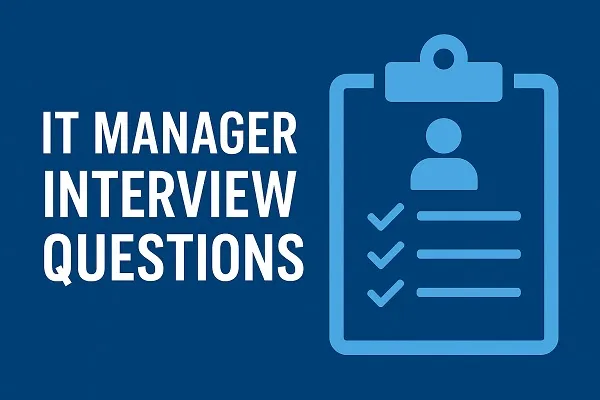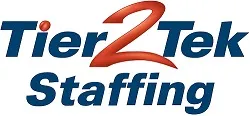IT Manager Interview Questions with Answers

1. What experience do you have managing IT teams?
I’ve managed cross-functional IT teams for over 5 years, focusing on infrastructure, support, and cybersecurity, with a strong emphasis on performance and collaboration.
2. How do you prioritize IT projects?
I use a combination of business impact, resource availability, and ROI to prioritize projects, often applying Agile or Kanban methods to manage progress.
3. How do you handle IT budget planning?
I analyze historical spending, forecast upcoming needs, and align with business priorities to create cost-effective, scalable budgets.
4. What’s your approach to cybersecurity?
I enforce best practices like regular audits, user training, endpoint protection, and layered security protocols to minimize risk.
5. Describe a time you led a system upgrade.
I led a company-wide ERP upgrade, overseeing vendor coordination, testing, and staff training, completing the project under budget and ahead of schedule.
6. How do you keep up with new technologies?
I follow industry blogs, attend webinars, and engage in professional networks to stay updated on trends and emerging tech.
7. How do you manage remote teams?
I use tools like Slack and Jira for communication and project tracking, paired with regular check-ins and performance reviews.
8. What metrics do you use to track IT performance?
I track system uptime, ticket resolution times, network latency, and user satisfaction through dashboards and reports.
9. How do you approach vendor management?
I assess vendor performance, negotiate contracts, and maintain strong relationships to ensure service quality and cost-effectiveness.
10. What’s your disaster recovery plan process?
I develop and regularly test plans involving data backups, failover systems, and recovery time objectives (RTOs) to ensure business continuity.
11. How do you ensure compliance with data regulations?
By enforcing policies aligned with frameworks like GDPR or HIPAA and conducting regular audits and staff training.
12. How do you handle conflicts within your team?
I address issues early, listen to all parties, and guide team members toward a constructive resolution while maintaining professionalism.
13. How do you evaluate new software or systems?
I consider compatibility, scalability, user feedback, cost, and support, often running pilot tests before full deployment.
14. Describe your leadership style.
I’m a collaborative leader who values transparency, encourages feedback, and empowers teams to take ownership of their work.
15. How do you align IT with business goals?
By actively communicating with stakeholders, understanding business strategies, and translating them into IT initiatives that drive value.
🔧 Key Acronyms Every IT Manager Should Know
Here are some essential acronyms you should be familiar with before heading into your IT Manager interview:
1. KPI – Key Performance Indicator
A measurable value that shows how effectively a team or system is achieving objectives.
2. SLA – Service Level Agreement
A contract that defines the expected service standards between a provider and a client.
3. RTO – Recovery Time Objective
The targeted time to restore services after an outage or disaster.
4. RPO – Recovery Point Objective
The maximum acceptable amount of data loss measured in time during a disaster.
5. VPN – Virtual Private Network
A secure connection over the internet between a user and a network.
6. ERP – Enterprise Resource Planning
Business management software that integrates various applications into one system.
7. ITIL – Information Technology Infrastructure Library
A set of practices for IT service management that aligns IT with business needs.
8. GDPR – General Data Protection Regulation
A European Union regulation focused on data protection and privacy.
9. API – Application Programming Interface
A set of rules that allows different software applications to communicate.
10. BYOD – Bring Your Own Device
A policy that allows employees to use personal devices for work purposes.
11. MFA – Multi-Factor Authentication
A security system that requires multiple forms of verification to grant access.
12. DNS – Domain Name System
Translates human-readable domain names into IP addresses used by computers.
13. ROI – Return on Investment
A performance measure used to evaluate the efficiency of an investment.
14. SaaS – Software as a Service
A cloud-based software delivery model accessed through a web browser.
15. LAN – Local Area Network
A network that connects computers within a limited area like an office.
